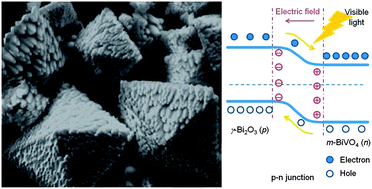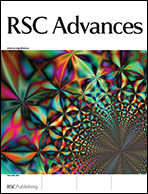m-BiVO4@γ-Bi2O3 core–shell p–n heterogeneous nanostructure for enhanced visible-light photocatalytic performance†
Abstract
In this paper, γ-Bi2O3, considered as the best photocatalyst among all Bi2O3 polymorphs, was successfully prepared on the surface of m-BiVO4 octahedral crystals through an alkaline “etching” process. Extensive XRD, SEM and TEM characterization revealed the formation of a p–n junction in the form of m-BiVO4@γ-Bi2O3 core–shell heterostructure. In addition, the alkaline concentration and reaction time during the etching process were studied and found to be critical parameters in the formation and yield of the Bi2O3 phase. The visible-light photocatalytic activities of these heterogeneous samples with different γ-Bi2O3/m-BiVO4 phase ratios were evaluated for the degradation of Rhodamine B (RhB). The results indicated that with an optimum amount of γ-Bi2O3 on the m-BiVO4 surface, the powders showed superior photocatalytic performance over pure m-BiVO4 octahedral crystals. The enhancement mechanisms were discussed based on the specific surface area and γ-Bi2O3 shell thickness, as well as the influences of improved charge carrier transfer on the p–n heterostructure.


 Please wait while we load your content...
Please wait while we load your content...